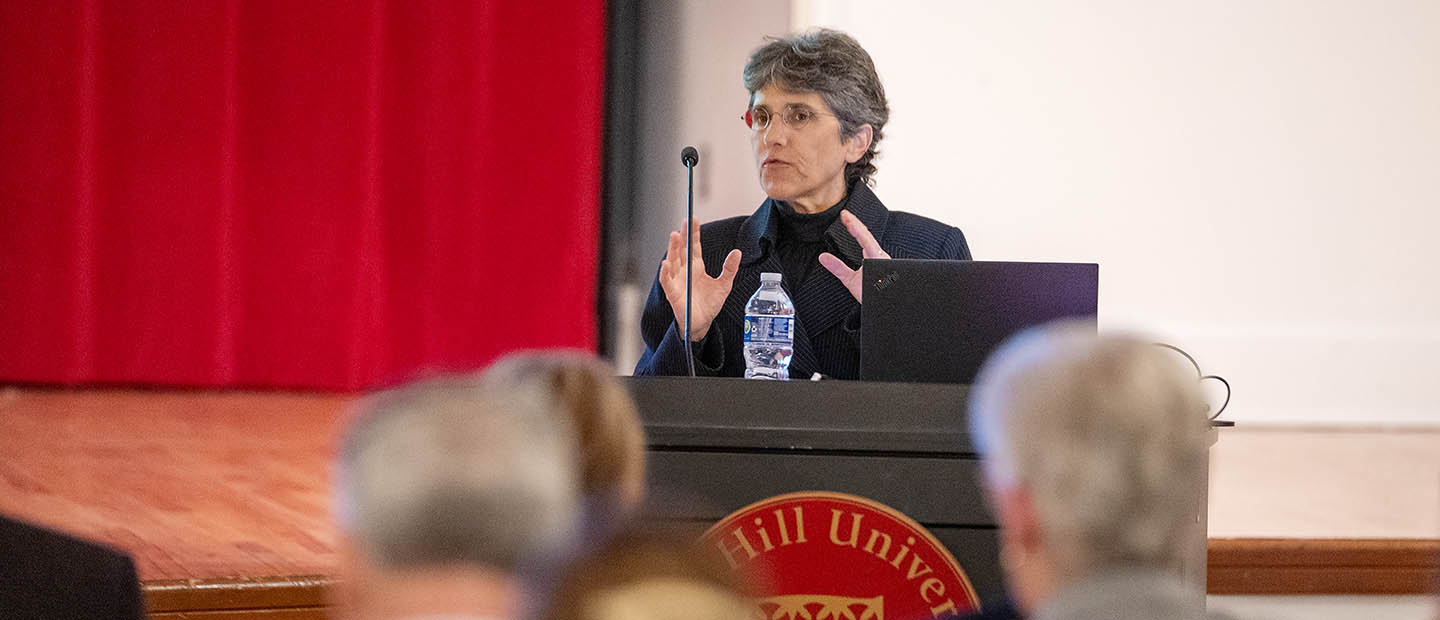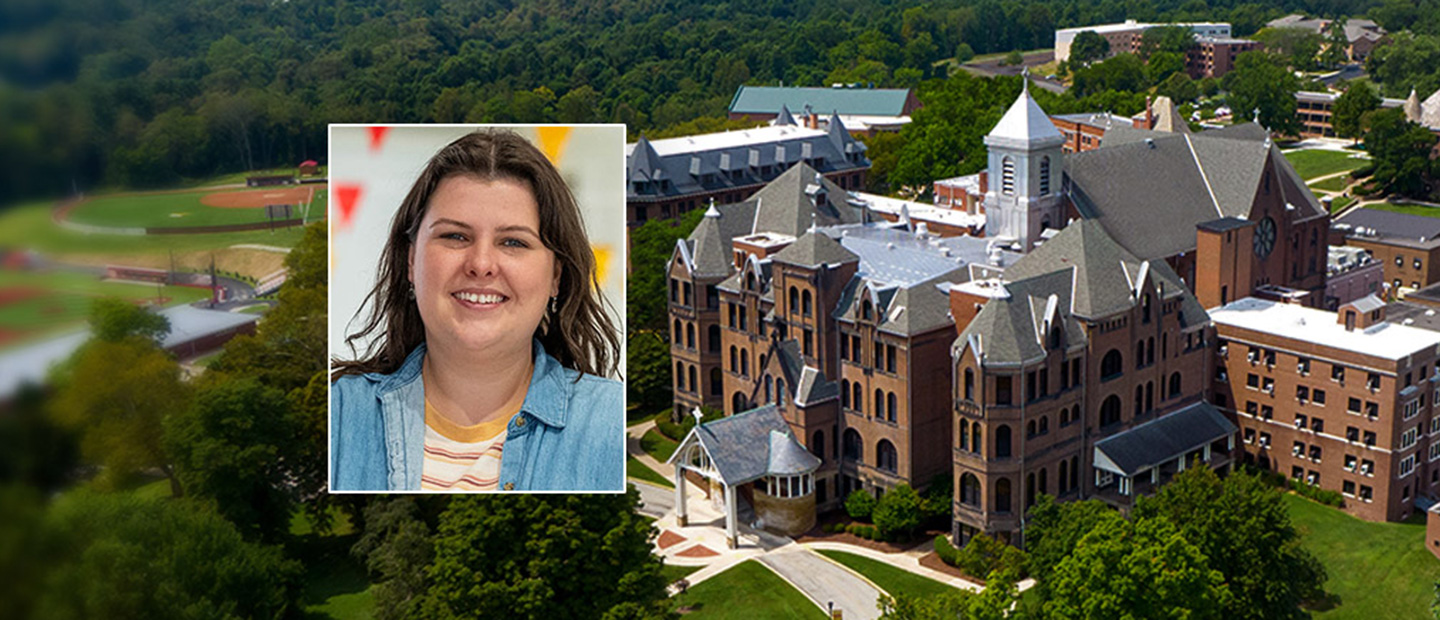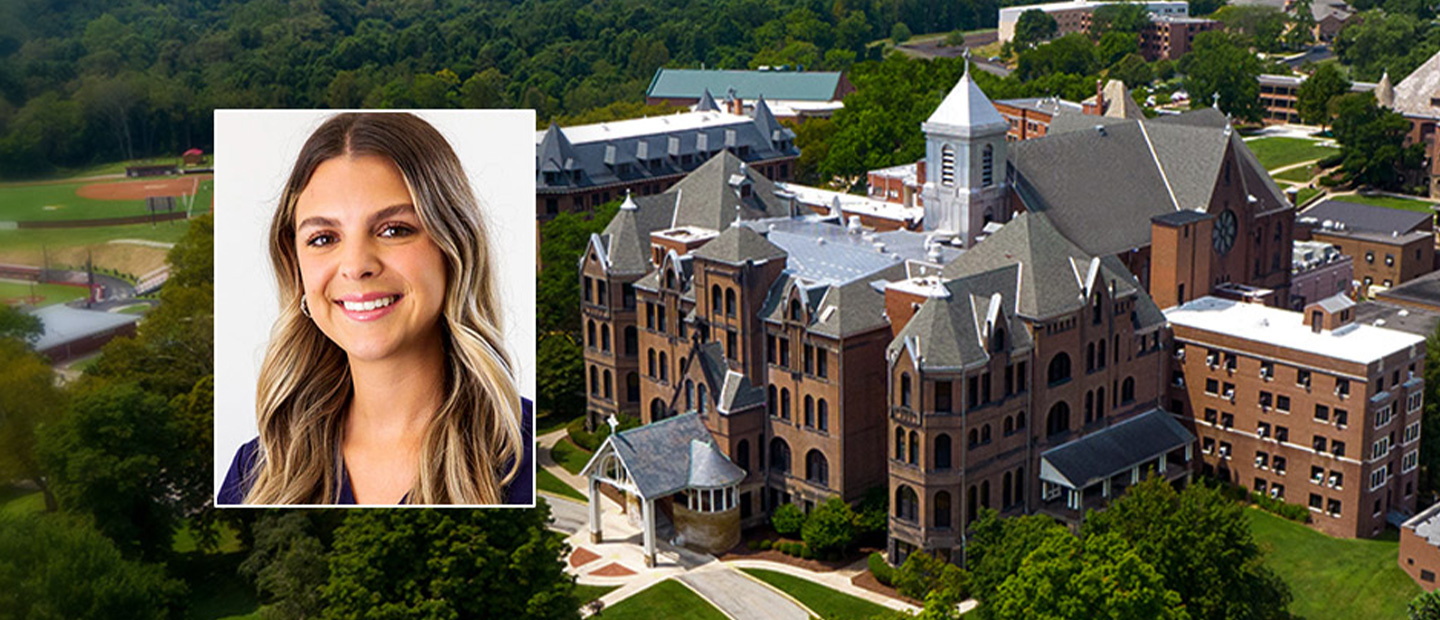Seton Hill Nursing Students Exchange Stories with Seniors
Nursing Program Initiative Offers Insight into Lives of Older Adults
As the residents of Redstone Highlands exchanged stories of their lives with current nursing students at Seton Hill, they shared not only their experiences, but laughter and tears.
Seton Hill’s Nursing Program is partnering with Redstone Highlands to implement a program called “The Age Friendly Health System.” The idea first came about when Nursing Program Director Diane Kondas and Assistant Professor of Nursing Carrie Slagle attended an annual meeting of the Pennsylvania Higher Education Nursing Schools Association, Inc. (PHENSA) and were introduced to an initiative called the Teaching Nursing Home through the Jewish Healthcare Foundation. The goal of the Teaching Nursing Home is to bring focus to the need for Registered Nurses in geriatrics.
“Many students shy away from this practice area because of a lack of knowledge about the roles of RNs within this setting,” Carrie said. “Students are often not aware of the autonomy and appreciation they develop when working with the older adult population and feel that their nursing skills are not valued in the Long-Term care setting.”
Nursing faculty have since been working on a plan on how to apply the initiative through their teaching and finding a partner. The Narrative 4 story exchange, a core methodology of the global organization that uses the power of story to foster human connection, allowed nursing students to exchange stories with the residents, and was the first step of implementing the initiative.
Seton Hill’s nursing students have a required course in gerontology in their senior year. Carrie’s goal through the story exchange was to help students develop an appreciation for those living within the community care settings.
“My focus was to bring attention to the worth and value of older adults in society. I wanted students to interact and gain a sense of appreciation for the lives these individuals have lived and are currently living,” Carrie said. “I think there is a stigma among older adults that they are sad, depressed and unable to contribute to society living in these settings.”
“From the feedback I received, the residents loved the activity and the students enjoyed it as well,” she said. “We had some tears and laughter at the storytelling which shocked me but also humbled me to the fact that the students saw the ‘face of the residents’ and appreciated their interactions!”
Nursing student Dorelia Hankins wasn’t sure what to expect from the story exchange going in.
“I had done multiple Narrative 4 Story Exchanges in the past and was looking forward to hearing the stories of older adults,” she said. “However, I was a bit unsure of how well they would memorize and retell our stories. Some of the older adults who we participated in the story exchange with were well into their 90s.”
Dorelia and another nursing student shared their stories with a 92-year-old resident.
“She was quite sharp for her age and did a very good job at telling my classmate's story,” Dorelia said. “I learned to never judge someone's knowledge based on their age. And that you are never too old to tell a story!”
“My classmates and I were inspired by this experience and learned that we are all more alike than unalike,” she added. “Moving forward in my career, I believe that this experience will teach me to be patient and open-minded when dealing with the older population. Although they may not be as spry as they once were, there are still many valuable life lessons we can learn from them.”
Christine Cusick, Professor of English and Narrative 4 Liaison and Master Practitioner, coordinates Seton Hill’s partnership with Narrative 4 and facilitated the exchange, along with two Humanities colleagues who are also trained Narrative 4 Facilitators, at Redstone Highlands.
“When I brought Narrative 4 to Seton Hill eight years ago, it was my hope that our community would be open to the power of story to help us to live our Setonian mission,” said Christine. “The story exchange created an intentional space for the residents to have a voice, and for the students to see them not just as patients but as humans with textured lives and beautiful memories.
“As we were leaving, one resident shared with me that he had forgotten how much he enjoys talking to others, and that because of the exchange he was going to come out of his room more often,” Christine added. “The sincere beauty of his words tells me that the students made him feel heard.”



